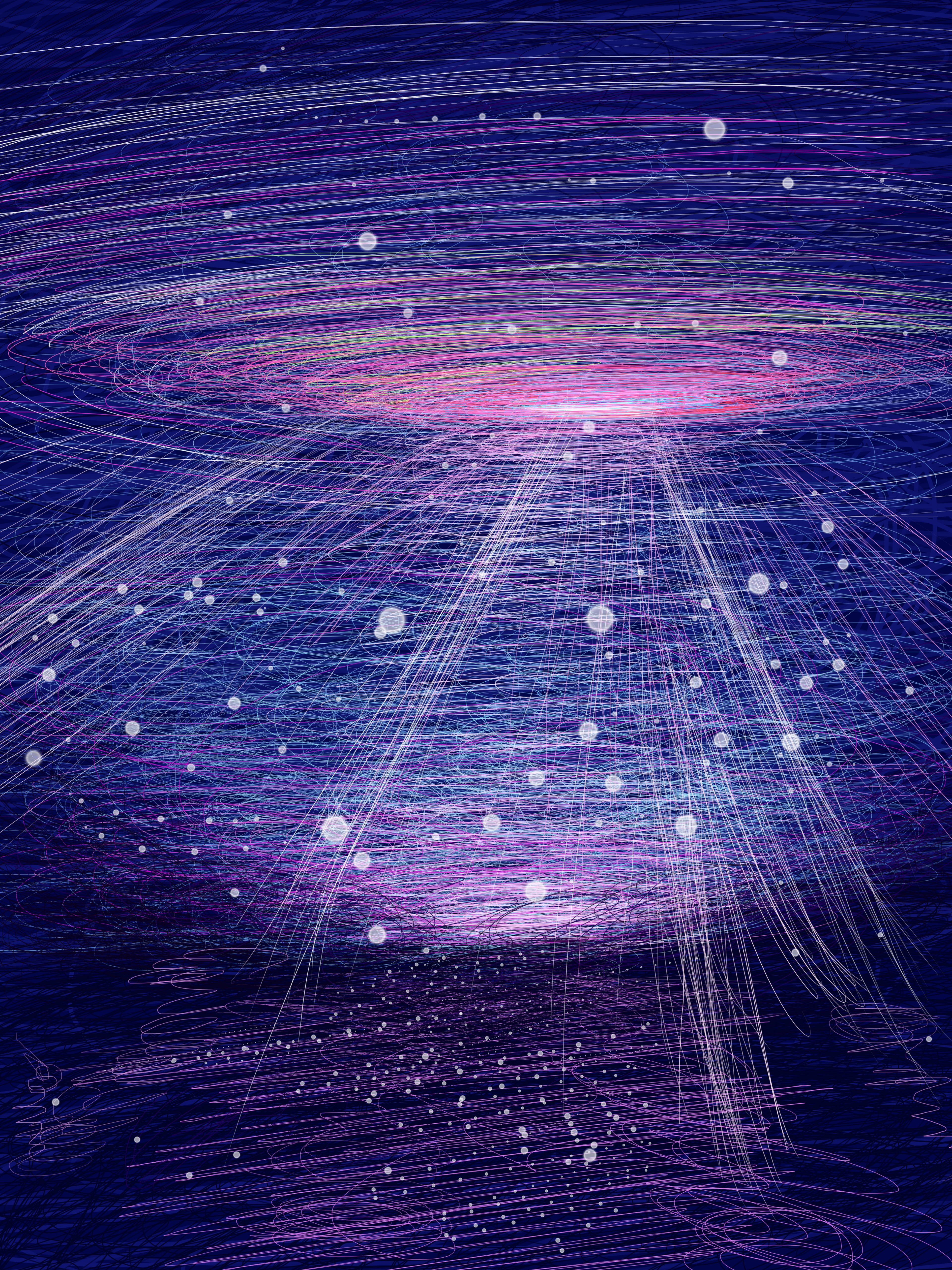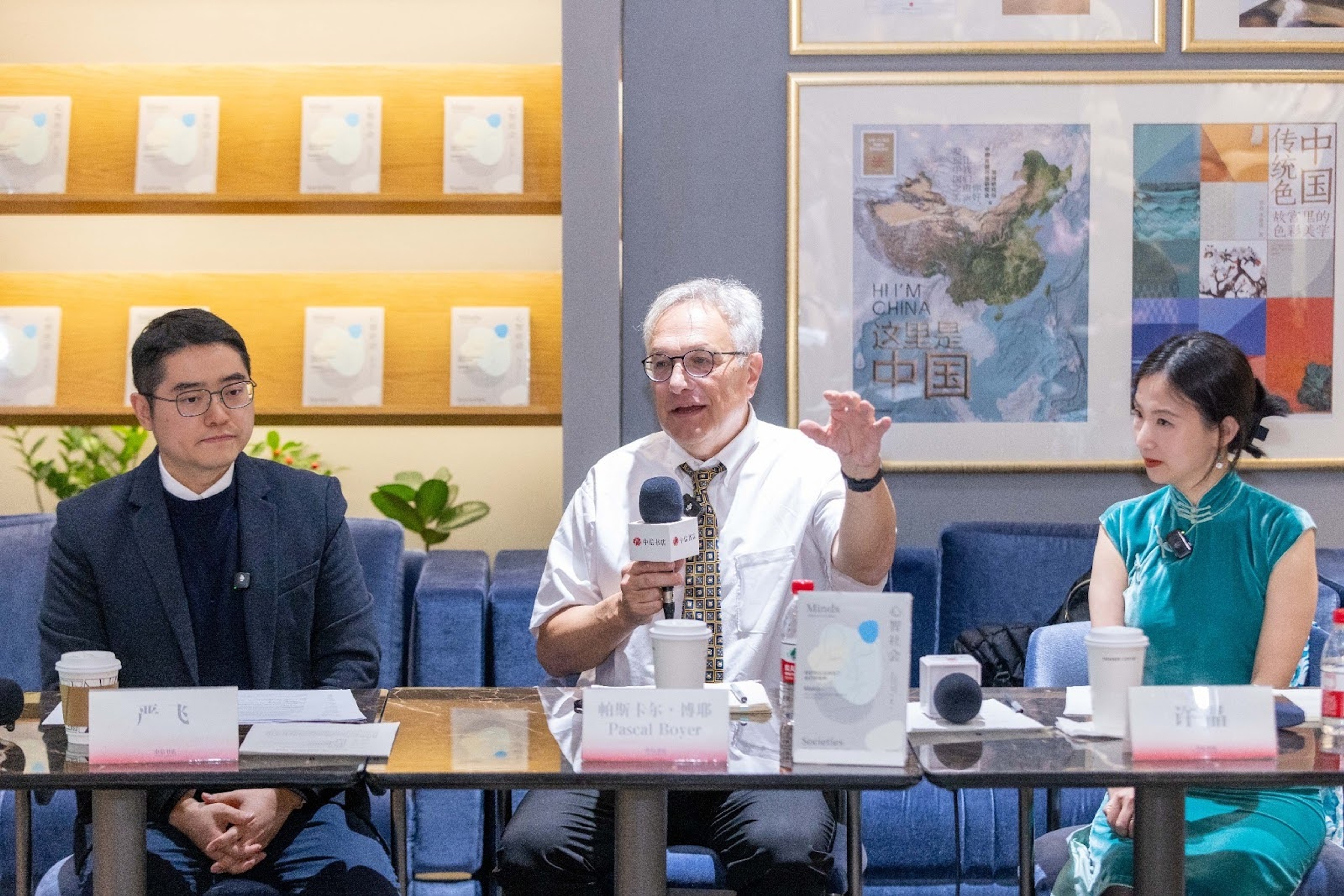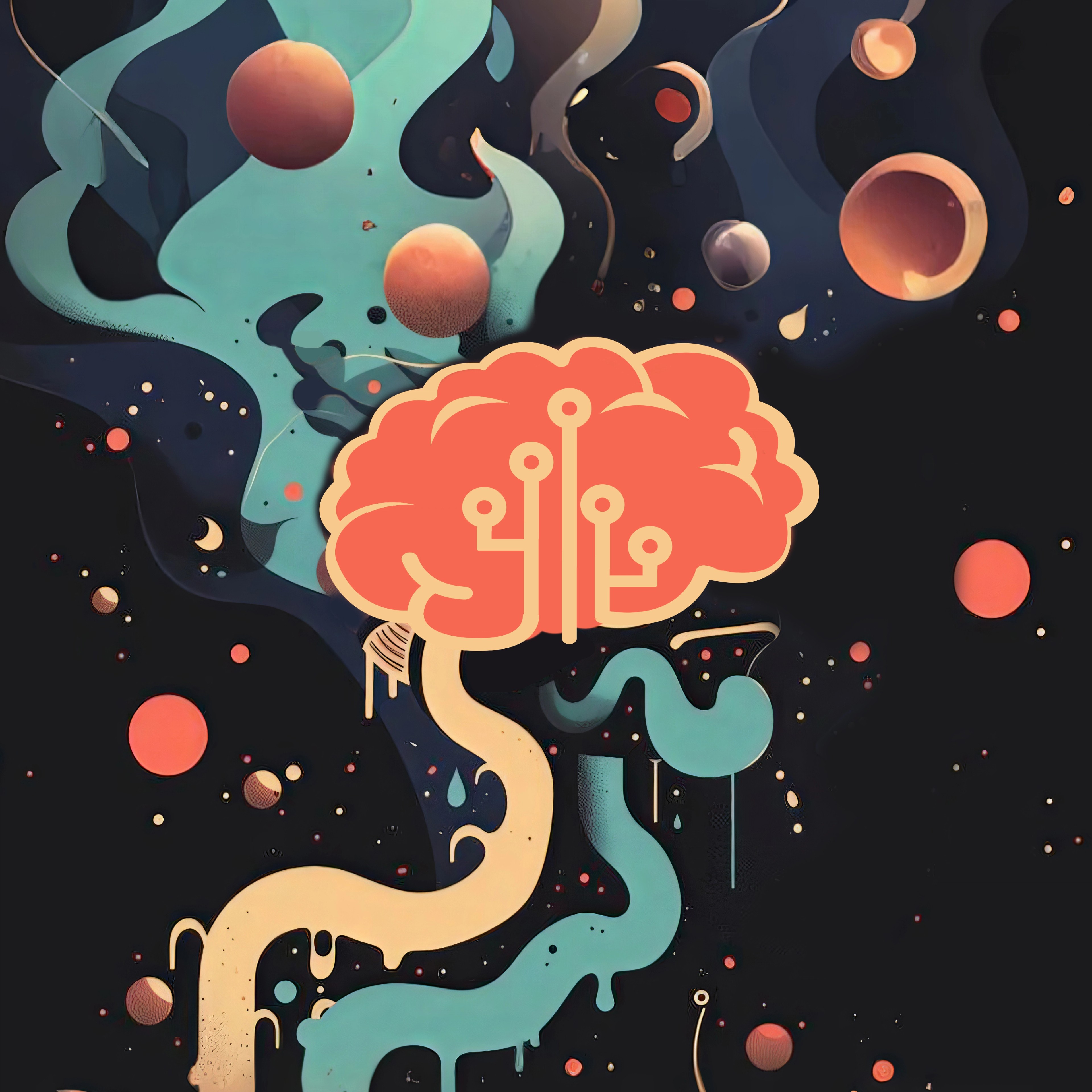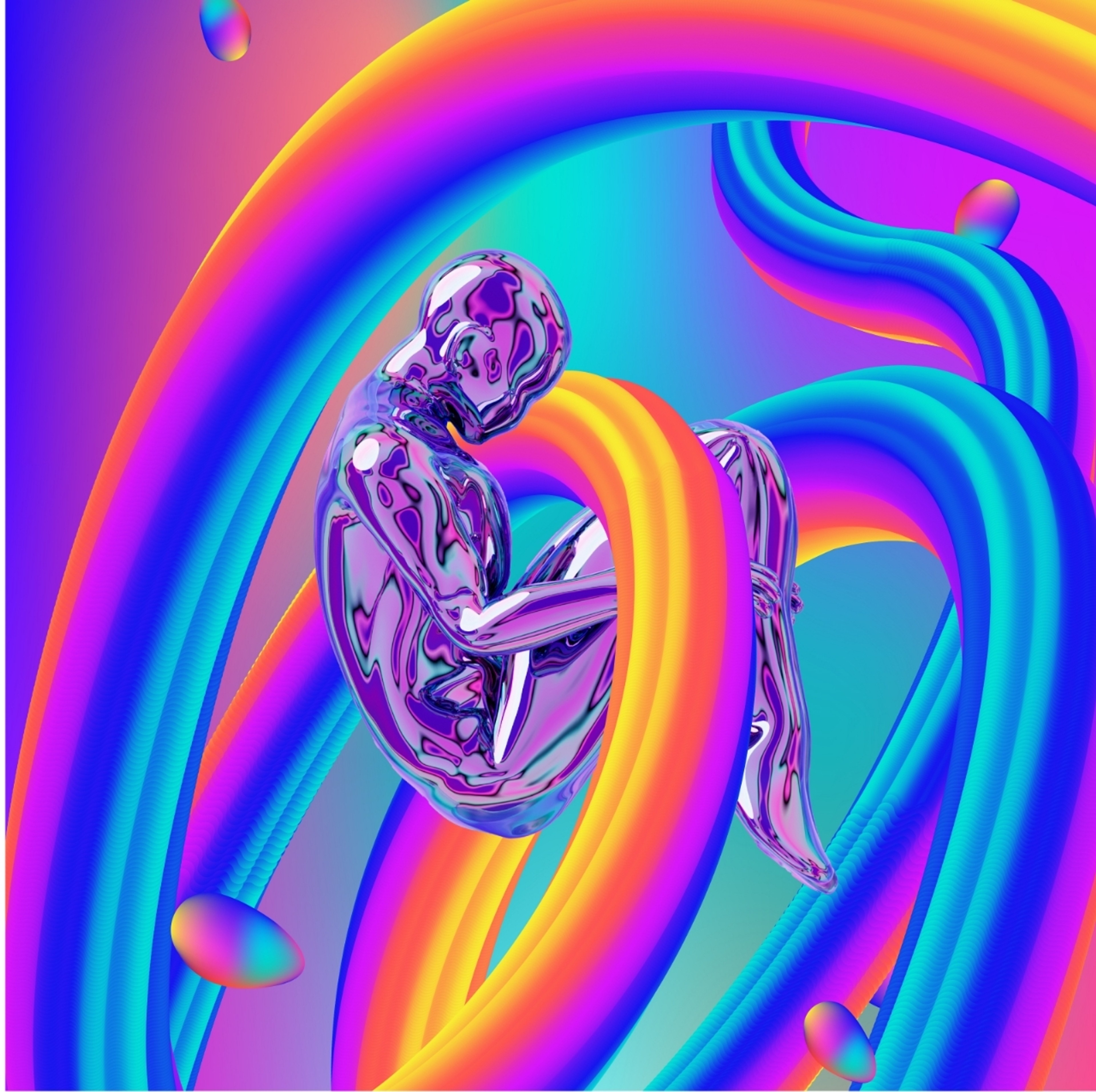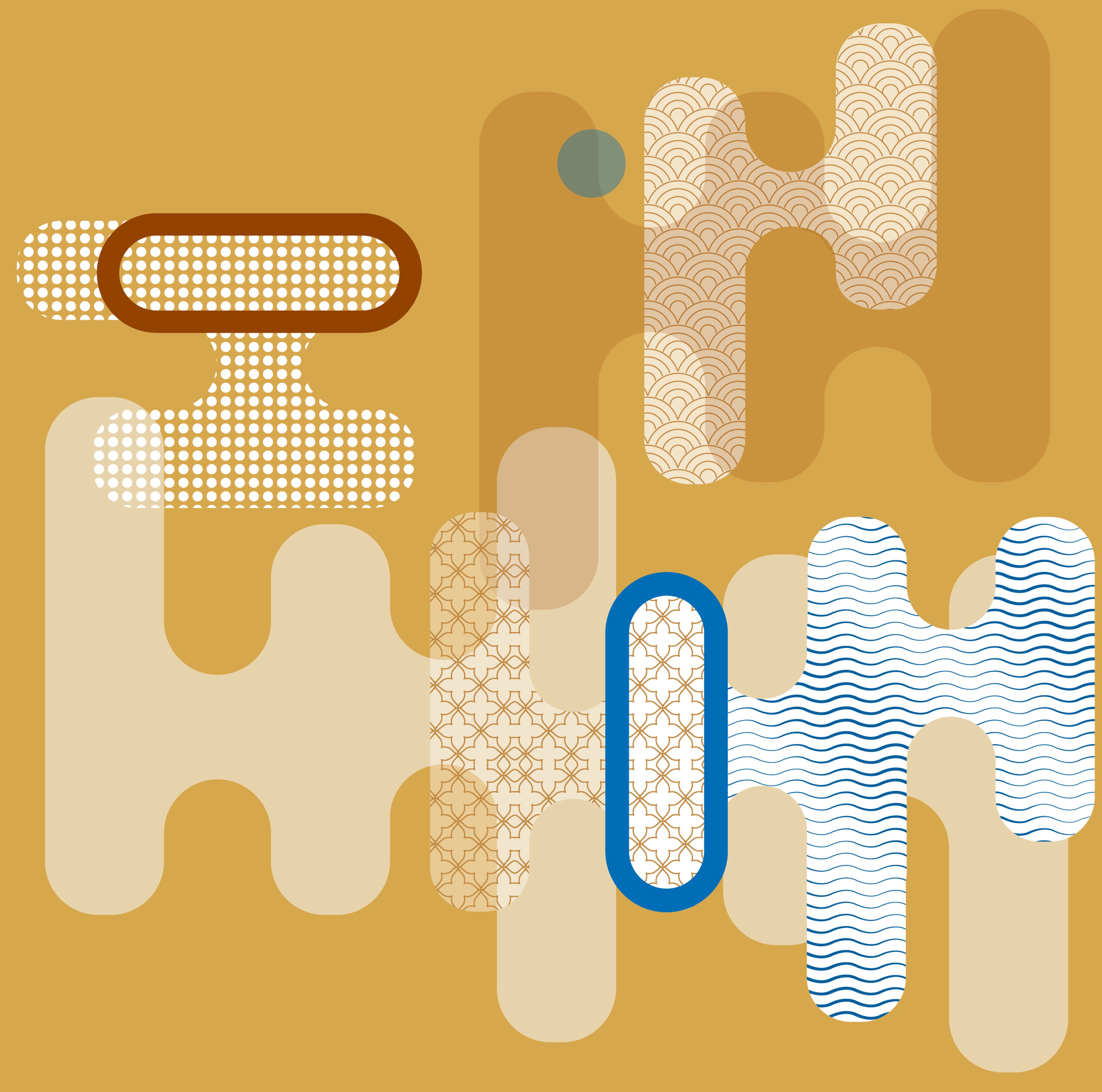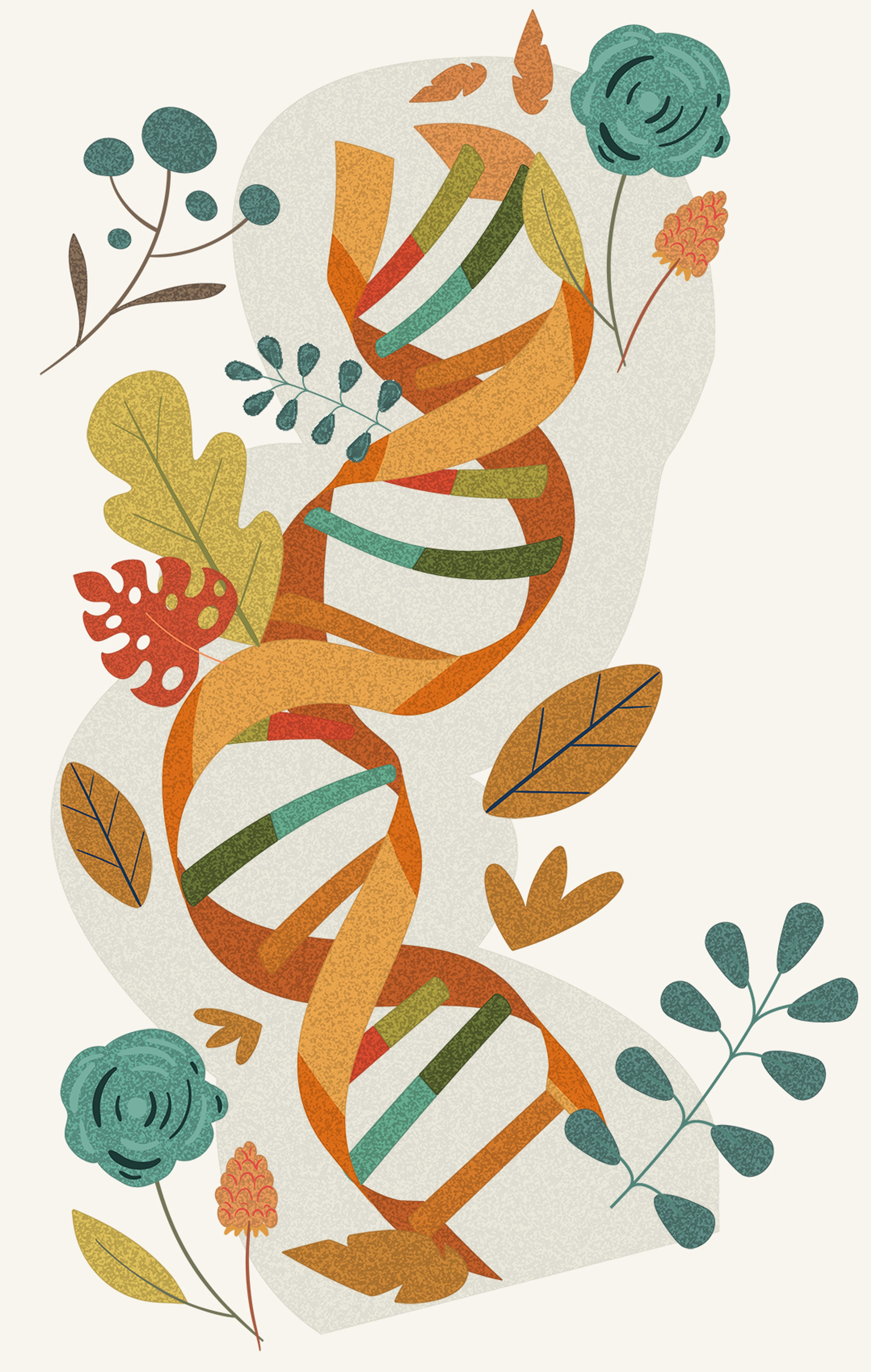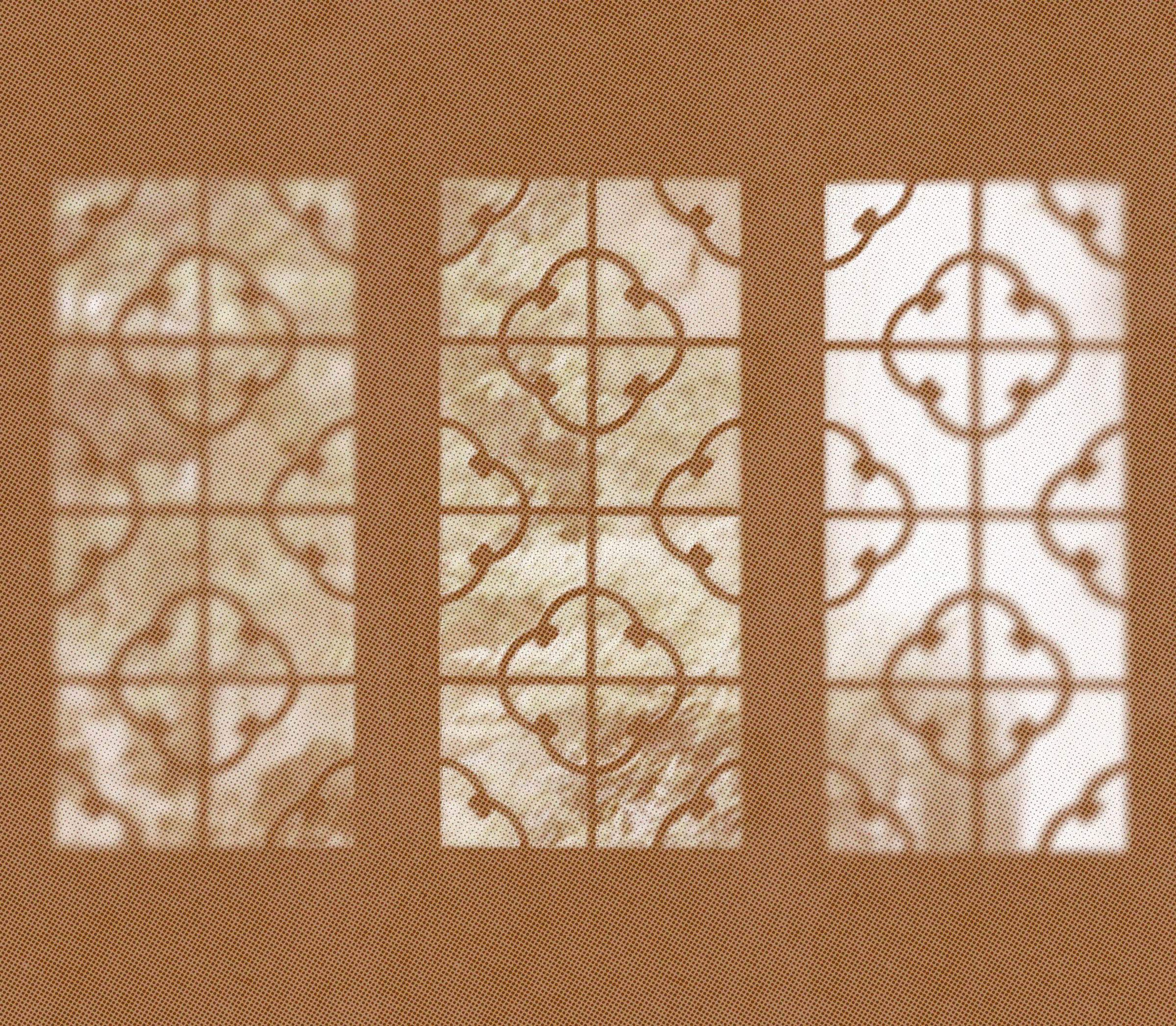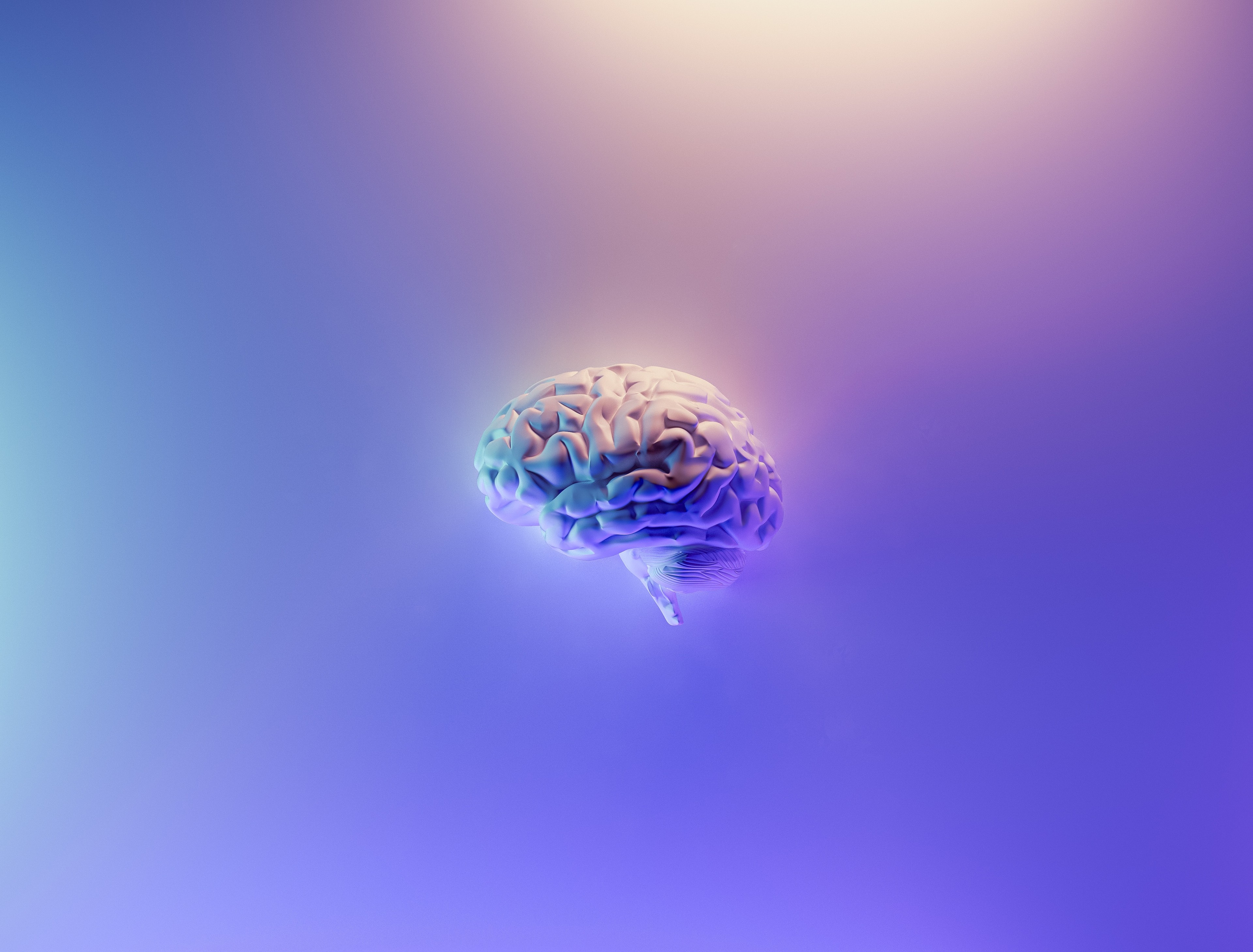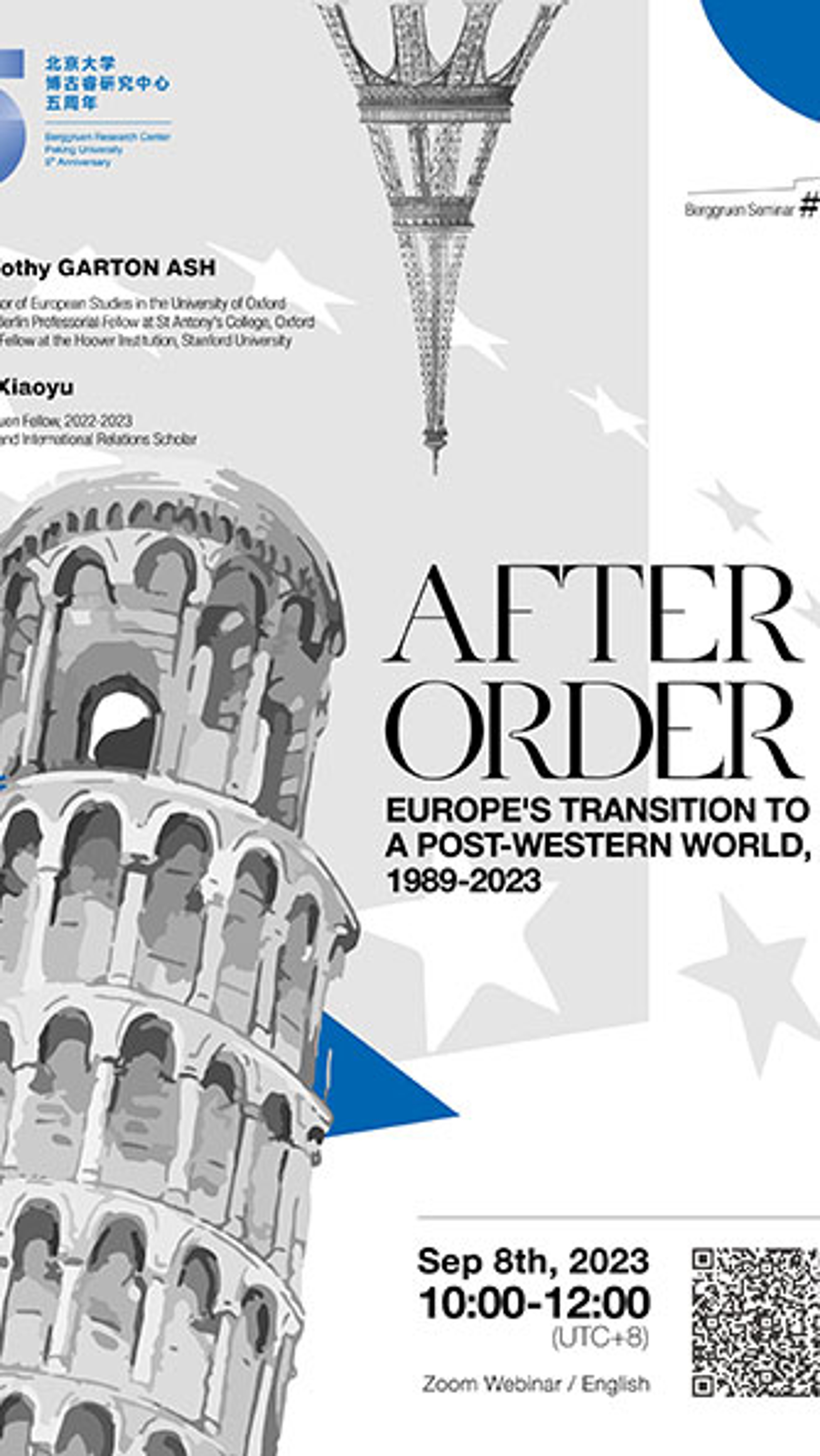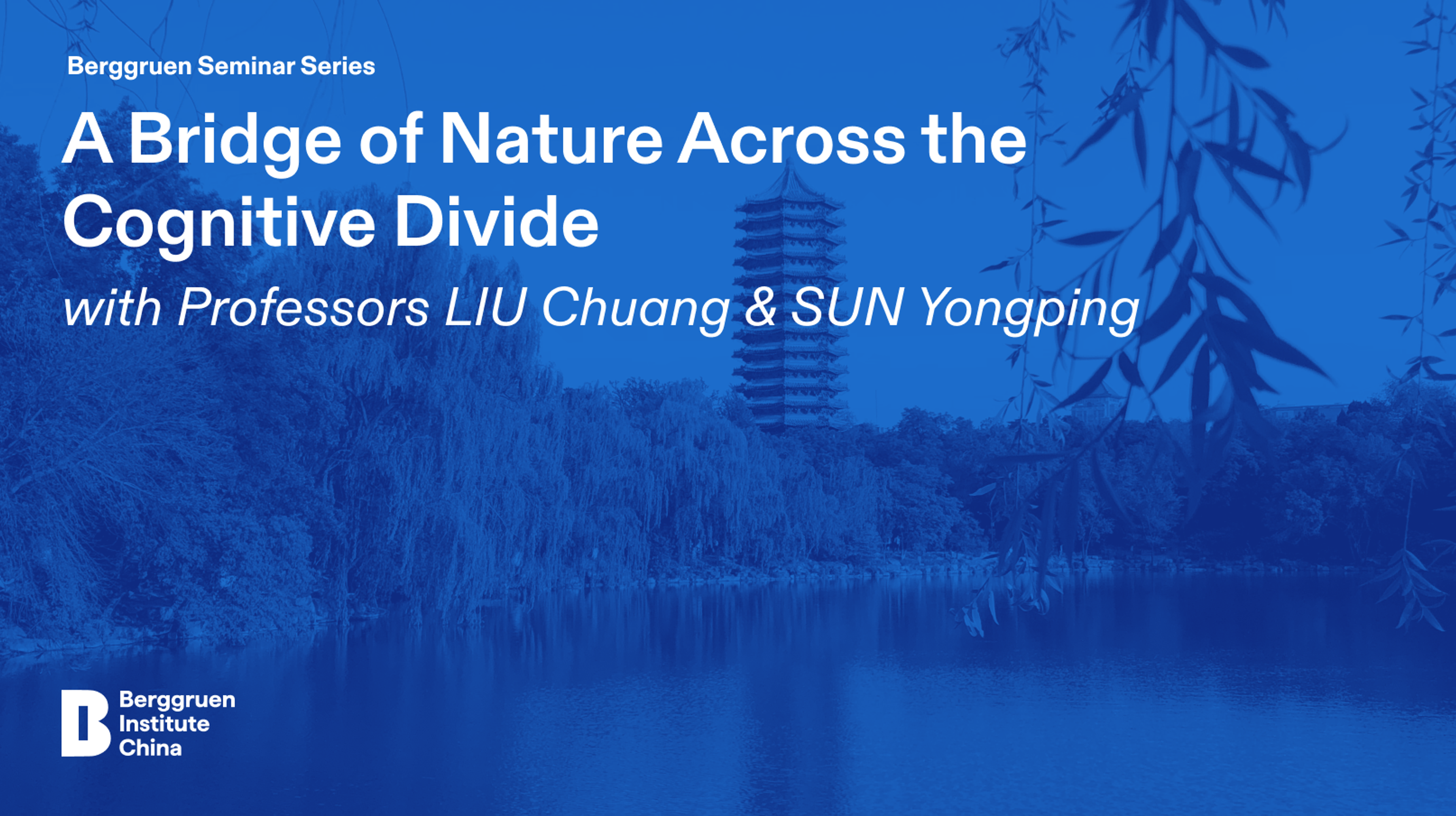A Bridge of Nature Across the Cognitive Divide: Scientific Externalism of Perception and Cognition
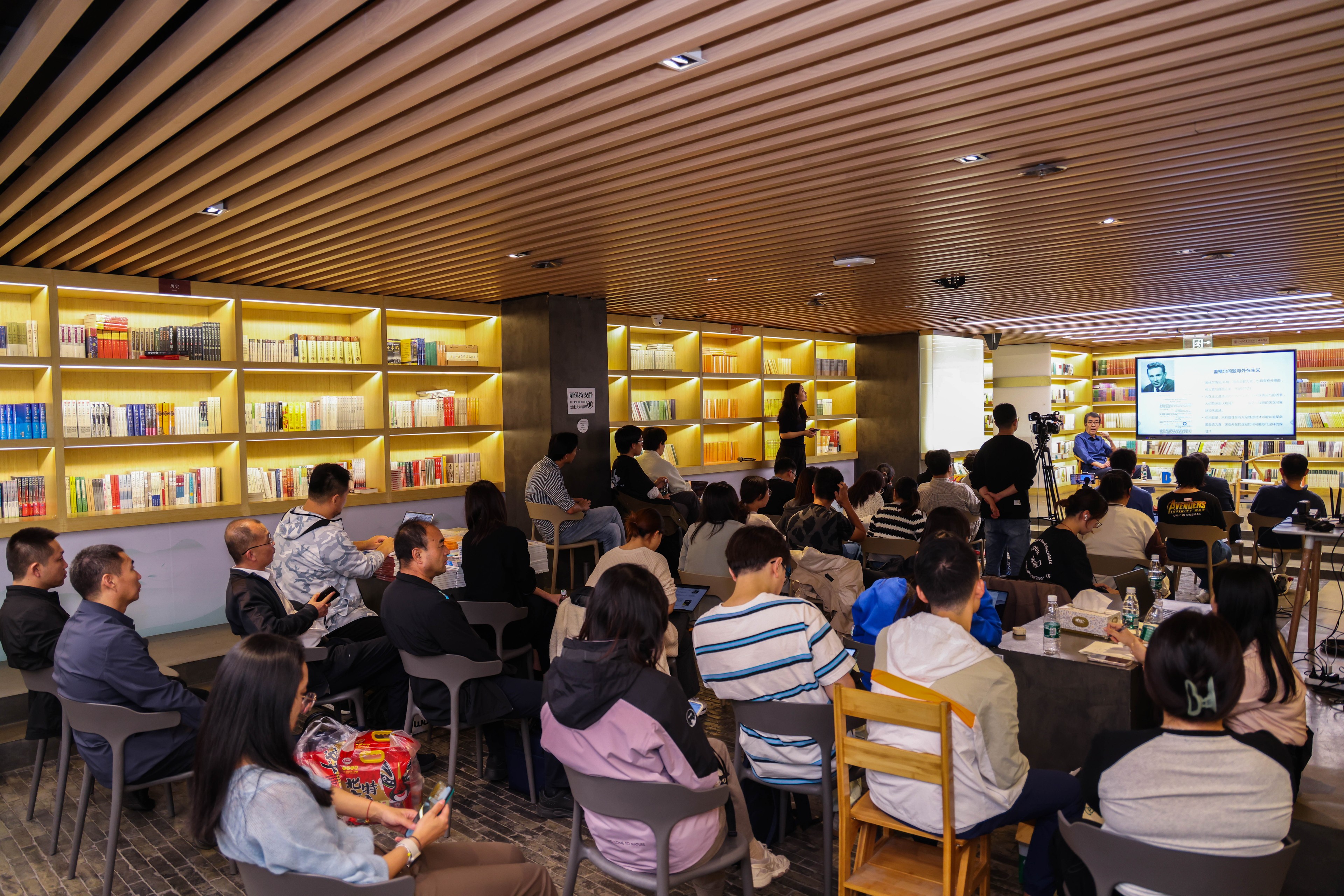
- Date: October 13, 2023
- Location: PKU Bookstore, Beijing
On the evening of October 13, 2023, Berggruen Lecture 24, "A Bridge of Nature Across the Cognitive Divide: Scientific Externalism of Perception and Cognition", was held at PKU Bookstore. Liu Chuang, Distinguished Professor of Fudan University and Director of the Center for the Philosophy and Science of Intelligence, was the keynote speaker at the event, and Sun Yongping, Associate Professor of the Department of Philosophy of Peking University (PKU), served as the moderator. Starting from the controversy between internalism and externalism in epistemology, the speaker put forward the concept of "bridge of nature" based on the inspiration from the theory of "fast and slow thinking" to interpret the mechanism of animal perception and low-level cognition. The concept can be combined with the latest "Bayesian Brain Theory" about the integration of animal perception and action, laying a theoretical and experimental basis in terms of cognitive theory and neuroscience for the “bridge of nature” across the cognitive divide.
Skepticism and True Knowledge of the Mind and the Outside World
Professor Liu Chuang began his lecture by raising this question: The isolation of the mind from the outside world makes us doubt the possibility of true knowledge, the uncertainty of future events makes us doubt the possibility of predicting the future by inductive reasoning, and the Gettier Problem warns us that evidence can be completely decoupled from truth, so is the knowledge obtained by human beings relying on rationality and evidence still true knowledge? He used such a set of classical epistemological questions to draw out the theoretical background and philosophical concerns of the cognitive divide and the concept of the bridge of nature. Whether true knowledge is possible and how to ensure that we gain true knowledge instead of fallacy have always been the central questions of epistemology. Based on the difference between knowledge and belief, traditional epistemology sticks to the classical definition, namely, knowledge is "justified true belief" (JTB). It holds that as long as a person's belief is true and has sufficient reason to uphold that belief, then the belief constitutes knowledge.
However, it seems that this classical definition cannot escape the challenge of skepticism. Professor Liu Chuang pointed out that Descartes's general skepticism and Hume's empirical skepticism both reveal the existence of a cognitive gap—we need a JTB to ensure true knowledge, but empirical belief seems never able to find a sufficient reason without counterexamples. The goal of cognitive internalism is to find sufficient reasons to cross this cognitive divide, so as to find reliable reasoning for empirical propositions like mathematics and ensure true knowledge simply through internal beliefs such as reason, basis, and evidence.
However, the emergence of the Gettier Problem subverted the epistemological approach of internalism, indicating that even if the condition of JTB is satisfied, beliefs still may not constitute knowledge, but simply bump into luck, which is the so-called “Gettier case”. Professor Liu Chuang used a story about antique transaction as an example to explain what is a Gettier case: A person who thinks himself knows a lot about antiques often goes to the antique market to hunt for treasures. One day, someone happened to come to the market to sell a very rare Song Dynasty (960-1127) rubbing, which is genuine, but assessing its authenticity is far beyond the ability of everyone in this market. The man who thinks himself is very familiar with antiques occasionally found this Song Dynasty rubbing in the market. He believed it was authentic and then bought it. In hindsight, his judgment is correct, and this rubbing is really from the Song Dynasty. In this case, we cannot absolutely claim that he "knew" that it was a genuine Song Dynasty artifact, because he seemed just to have a good luck and did not really have the relevant knowledge.
The internalist approach is therefore no longer viable. People have realized that in order to eliminate factors like good luck as in the above-mentioned Gettier case, it may be necessary to resort to externalism, and that the cognitive divide may only be bridged by reliable means provided by something outside the mind, which led to the trend of externalism since the 1960s. Nozick's idea of knowledge as tracking truth, Goldman's theory of causal chain perception, Sosa's theory of virtue knowledge, etc., are all trying to guarantee true knowledge through extramental means.
But in fact, in the history of philosophy, externalism has a long-standing philosophical origin. In contrast with conventional views, Professor Liu Chuang argued that Descartes and Hume can be actually regarded as externalists. According to traditional interpretation, Descartes was a pioneer of "rationalist" epistemology. He leveraged ontological theory to prove God's existence, using concepts such as "infinite" to logically prove that God is an entity that exists outside of us. After proving the existence of God, he assured the truth of "clear and discerning beliefs" based on the alleged existence of God, which in essence required that true knowledge have external guarantees. In this sense, Descartes and his theory already showed an externalist tendency. It should also be noted that Descartes' idea of divine veracity may be interpreted by the theory of naturalism, i.e., the process of human thought is also a natural process, through which the true belief may be guaranteed by the external laws of nature. Similarly, Hume, after proposing his theory of skepticism, used "empirical method"—the last possible means—to solve skepticism, that is, although the principle of induction is not valid, it can guarantee the reliability of belief through "habit" and "running-in" between human beings and the environment, which he called "the skeptical solution to skepticism". This reliable belief cannot always be true, but it works in most cases. These attempts to guarantee true knowledge already formed the rudiments of externalist thinking.
Cognition and Brain on the Bridge of Nature
In Professor Liu Chuang's view, it is necessary to distinguish between instinctive space and rational space when discussing the topic of true knowledge. This distinction between instinct and rationality coincides with that between animal skills and human knowledge. Animals also show specific skills in movement and survival, but these skills are achieved directly with the help of physical information and purely by instinct, so they cross a bridge of causal instinct. At the same time, humans acquire knowledge through the space of reason and walk through a bridge of rationality.
However, humans also have "tacit knowledge" and some of their skills are close to instinct. Do these manifest that they have knowledge? Does knowledge have to be propositional knowledge? Does it simply indicate some kind of continuity between humans and animals? These questions remain controversial in the philosophical community. Professor Liu Chuang holds that such tacit knowledge cannot be interpreted as pure causal instinct. American basketball player Kobe Bryant's famous quote—"It's all mental!"—provides a vivid and humorous explanation for this problem. He felt that his mastery of basketball skills was still mental, rather than physical body instincts. The skills that people are familiar with are not purely physical causal instincts.
Inspired by the theory of fast and slow thinking, Professor Liu Chuang further proposed the concept of "bridge of nature". The main connotations of this concept include: (1) Rationality is not the only space or bridge for perceiving truth; (2) The bridge of rationality should not be matched by the bridge of cause and effect, but by the "bridge of nature"; (3) Kobe's quote of "all mental" is a model of combination of fast and slow thinking; (4) The “goods” passing through the “bridge of nature” include both non-propositional and propositional knowledge, but there are not many true propositions, and the knowledge passing through the bridge is only "approximately true".
Professor Liu Chuang believes that the Bayesian brain/active reasoning theory provides greater philosophical resources for explaining human knowledge and cognition. This theory has two core concepts: active reasoning and the Markov blanket. The basic idea of active reasoning is that human and animal brains are a kind of perceptual and cognitive system that relies on Bayes' rule to reason, test, and minimize errors (or to say the least, change their original reasoning assumptions if they cannot be minimized) based on the principle of minimum free energy. The theory of active reasoning finds that the human brain naturally understands the world through the Bayesian mechanism, and the Bayesian theorem is not only about probability or a simple mathematical discovery, but also a natural law on which the human brain operates. Another core concept related to active reasoning is the Markov blanket, which is a causal information protection mechanism imposed on the human brain that limits the physical information (light, sound, etc.) entering the brain, allowing the latter to realize cognition with only a small amount of energy and at a relatively low speed.
In conclusion, humans’ cognitive divide consists of two layers: one is the natural gap and the other is the rational gap. The existence of the Markov blanket makes the cognitive divide even deeper and wider. Bayes' rule is not only the theorem on which human beings build a bridge of rationality, but also the law for the bridge of nature on which the human brain operates. It is impossible to directly cross the cognitive divide. Only true propositional knowledge can pass through the bridge of rationality, and only external authority can ensure the smooth flow of the bridge of rationality. However, knowledge should also include approximately true propositions, non-propositional perception, tacit knowledge, etc., which are obtained through the bridge of nature. The bridge of nature is supported by mechanisms such as the Bayesian brain theory. If the Bayesian brain theory has extensive, systematic problems, the survival of humans and even animals will be seriously threatened. In fact, the discovery of the Bayesian brain model was based on many studies of sick brains; If the bridge of nature is broken, it will be unable to be replaced by the bridge of rationality because fast thinking has something irreplaceable. A major difference between humans and animals is that humans can train and maintain the bridge of nature with rationality.
Highlights of the Discussion
Professor Liu Chuang's lecture was very inspiring, and audiences on the spot and those online raised some high-quality questions. As for questions about the relationship between the bridge of nature and the bridge of rationality as well as the nature of rational knowledge, Professor Liu replied: The relationship between the bridge of nature and the bridge of rationality in the acquisition of reliable knowledge is complex. The bridge of nationality is responsible for nurturing and maintaining the bridge of nature, making decisions in fields like politics and financial management, and establishing ethics and norms. From the perspective of evolution, cultivating the bridge of nature is the initial task of the bridge of rationality. Rationality can be naturalized, but from the perspective of epistemological externalism, it is necessary to maintain the notion that knowledge is based on true beliefs and to add other conditions to ensure its integrity. These additional conditions are inevitable products of rational thinking. The existence of the bridge of nature may help explain problems that are difficult for traditional philosophers to interpret, such as the concept of approximate truth and non-conceptual perceptual content.
An audience asked why the Bayesian brain doesn’t make us "more and more stupid" when it makes mistakes—since it cannot be immune to mistakes. Professor Liu explained that the Bayesian brain is a mechanism provided by experimental psychology, but it can also make mistakes. The human brain directly represents the outside world as observed, rather than merely capturing raw information such as light or sound. This characterization has its own norms and its correctness is determined based on facts. In contrast, traditional epistemology asserts that regardless of the authenticity of outside objects, their impressions on human mind are always the same. However, according to naïve realism, there are differences between the impressions produced by facts, illusions, and delusions in people's minds.
